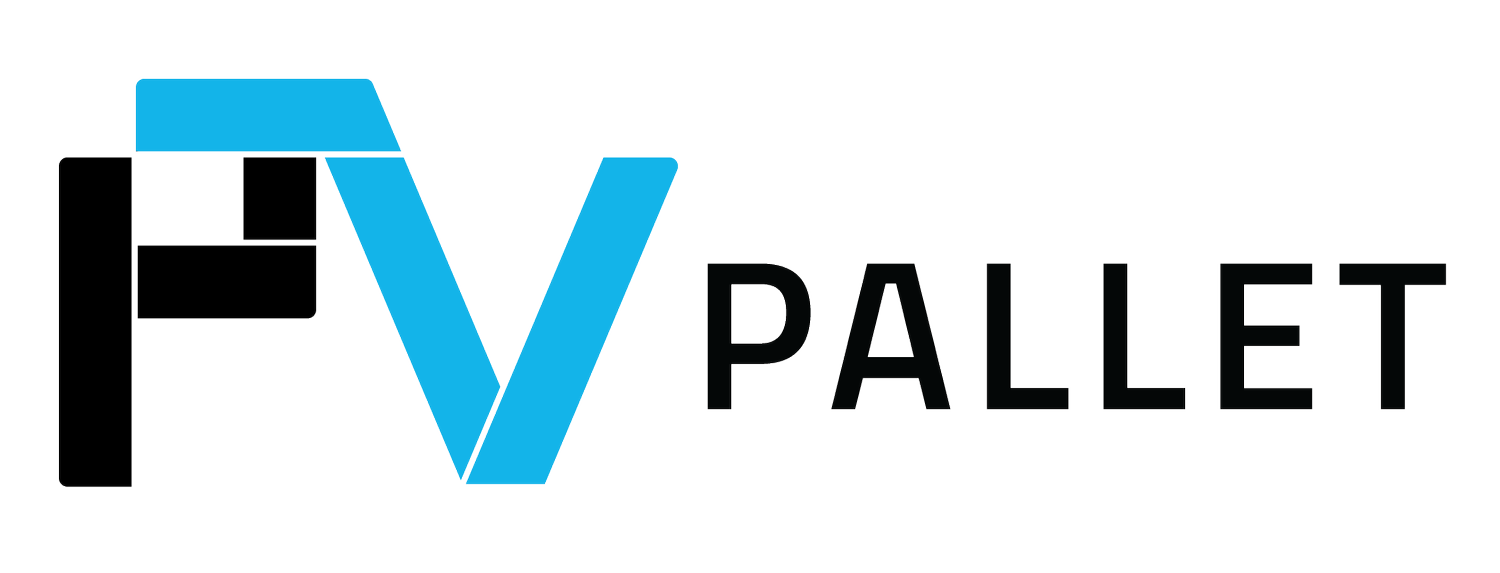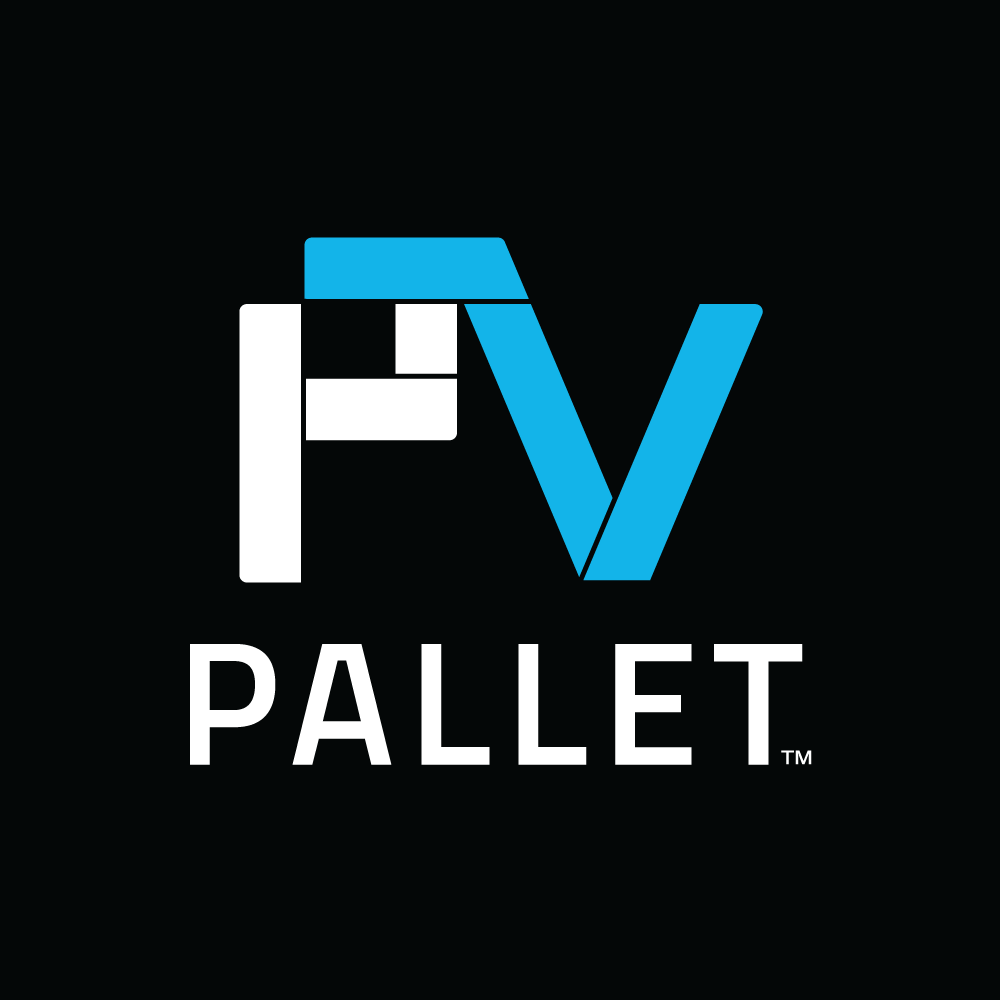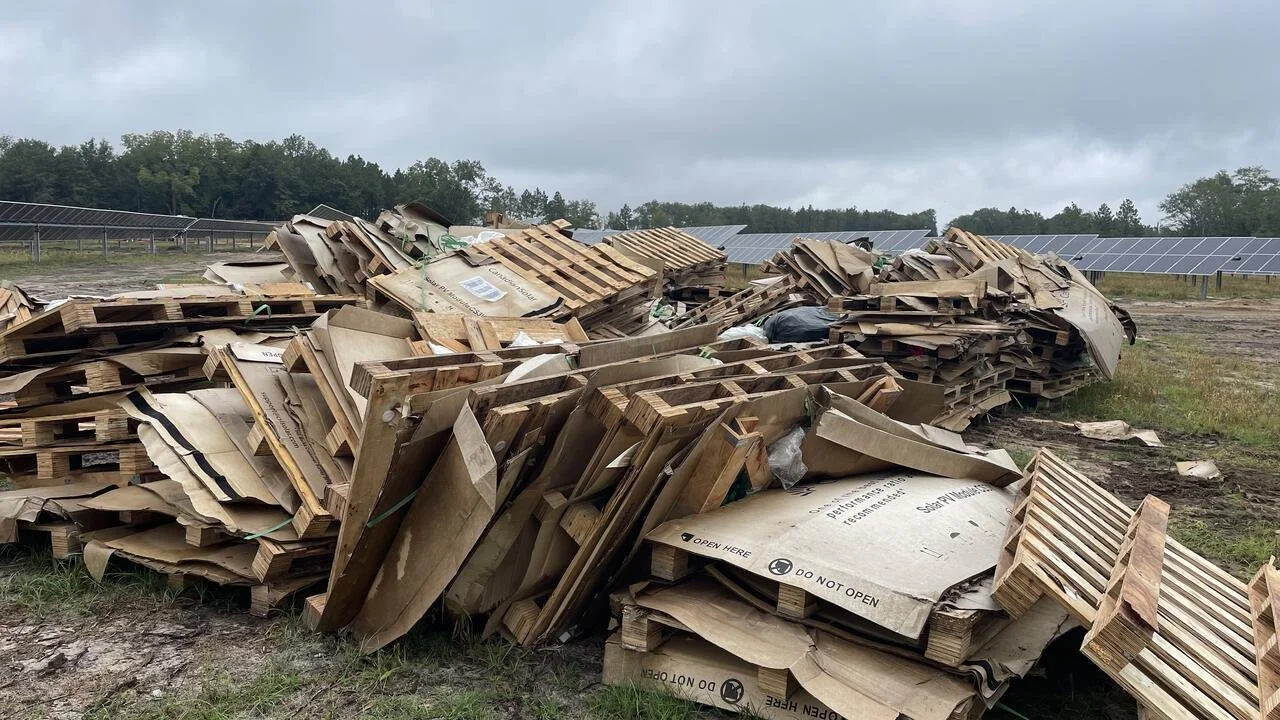The Benefits of Reusable Packaging on Utility-Scale Solar Installations
Philip Schwarz (left) and Ryan Schofield (right) speak about reusable packaging at RE+
This year at RE+, PVpallet’s CEO Philip Schwarz presented alongside Ryan Schofield, Vice President of Premier PV, about how utility scale projects can benefit from reusable packaging. Premier PV, a leading solar eBOS manufacturer that prioritizes quality and sustainability, incorporated reusable packaging into their operations from the outset. This approach sets them apart as a model for effectively utilizing reusable packaging on remote utility-scale job sites. Their products, which include combiner boxes, splice boxes, harness solutions, and load break disconnects, are all delivered in sustainable packaging.
During their presentation, Philip and Ryan addressed the challenges posed by single-use packaging and provided insights on how reusable packaging can be successfully integrated into the utility solar supply chain.
Here are some key takeaways from their discussion.
Single-Use Packaging: Solar’s Status Quo
PHILIP SCHWARZ: Right now, the status quo in our industry is that everything is shipped to job sites using single-use wood pallets and crates along with shrink wrap and plastic banding. Generally, the packaging is used one time, then thrown into landfills (or gathered into giant piles and burned).
The images above are real-world examples of solar packaging. This is the norm. When this type of packaging sits out on a utility-scale site, it sits in the sun and the rain and gets dilapidated, resulting in a lot of unnecessary product damage. Can you imagine being out in the field trying to open that package of solar panels? Take the shrink wrap off, cut the banding, and…then what? All those modules are vertically stacked. That's almost 2,000 pounds of solar panels that are falling over on your workers out on the field. On top of that, when they're done, they then have to go pick up all that trash. In other words, this isn’t just a trash issue. There’s the CAPEX for purchasing the packaging, the expense of damaged product, project delays due to damaged product, safety issues, and then the cost to send it to a landfill. Factor all that in and single-use packaging is costing the solar industry billions of dollars every year.
Now let’s dig a little deeper into the breakage issue. In our industry, we wrap our large sheets of glass in shrink wrap and sometimes add a little cardboard. That's it. As a result, we see 2-7% of solar panels broken before they’re ever installed. Globally, that equates to over 21 million broken solar panels every year—which is about $3.5 billion worth of broken solar panels. Essentially, every touch point of a solar panel in the supply chain results in an additional 1-2% breakage. On a utility scale job site, you'll generally see 1-2% (worst case 3%). That’s because those solar panels are going straight from the manufacturer to the job site. On the residential side of the industry, breakage is closer to the 2-5% breakage—and sometimes upwards of 7%. That’s because those panels go through more touch points to get to the job site. In many cases, residential solar panels are also repalletized and broken down into smaller loads, adding even more to how much those panels are handled (and increasing breakage).
Reusable Packaging: 6 Benefits for Utility-Scale Solar Sites
1. Cost Reduction
PHILIP SCHWARZ: When replacing wood pallets with reusable pallets, you're often looking at 5-10 times the CAPEX, which sounds very cost prohibitive. But that’s just for the first use—and doesn’t include any additional OPEX savings.
I always go back to the example of a reusable water bottle. My water bottle costs maybe $25. I've been using it for years—and it's more than paid for itself. So eventually just from a CAPEX standpoint, it will pay back. However, what you don't get from a water bottle is the operating expense. A reusable water bottle functions the exact same as a disposable water bottle. But that’s not the case with solar packaging. With reusable packaging, we get OPEX benefits as well. Take, for example, the disposal costs on utility job sites. EPCs are spending hundreds of thousands of dollars just to throw wood pallets into landfills. There’s also the breakage issues I mentioned earlier. Implementing reusable packaging reduces both disposal fees and product damages. There are also other added benefits like improved safety and optimized storage.
We take a very consultative approach with our customers. We look at all their variables and their specific supply chain. And in almost every case we find that within 2-5 uses, reusable packaging pays for itself when compared to wood pallets. Then every use thereafter is money saved. Every project has its own variables, so there's no guarantee on that number, but we've worked with over 130 customers in the industry, and that's what we've seen.
Customer Payback: Example of the cost savings on four 10-megawatt sites using reusable packaging. We estimated over $500,000 savings on those four sites.
2. Contingency Dollars
PHILIP SCHWARZ: How do you get your reusable pallets and crates back? This is one of the biggest questions we get. Reusable packaging is a big investment. How do you know your packaging assets are going to be returned? Ryan, this is something Premier PV has solved on utility scale job sites. You’ve found ways to implement a return program with your customers. You’ve basically created the model for our industry to follow.
RYAN SCHOFIELD: We’ve definitely found a solution that works for utility scale projects. I think a lot of people say reusable packaging is not possible with that size of a project—but it is possible. As an eBOS manufacturer, it’s essential that we work very closely with the EPC. We take the time to understand the sequence of the installation. Then we're able to coordinate with the EPC on when product is coming in and when the empty containers will be returned. The reusable crates and scheduled deliveries are hugely beneficial for our EPC clients, so what we've been able to do is build the price of the crate into the price per megawatt of the project. By building the price in, it creates a returnable dollar amount back to your customer that is then refundable when the crates are returned. In other words, you're creating contingency dollars in the project. So as your customer gets close to the end of the project and close on their budget, you’re providing a dollar figure that sits out there. Then, when you return the crates or pallets, you can use those dollars to spread to other areas where you think you may be over budget. Our EPC customers appreciate having that dollar amount in their budget as long as they return the crates. The crates also collapse down, which makes them more efficient to return. Our customers just establish a return system in which they collapse the empty crates and lay them down in an area dedicated for returns. On a typical job site with single-use packaging, you’re already spending the labor time to dispose of the pallets. With reusable packaging, it’s just reloading a trailer with the empty crates rather than loading pallets and cardboard into a roll-off dumpster. Reusable crates are really a benefit for the EPCs. Rather than paying for packaging and then paying more to send it to a landfill, they are investing in packaging that is protecting their equipment, creating efficiency gains, saving them money, and adding contingency dollars to their project.
“Reusable crates really benefit EPCs. Rather than paying for packaging and then paying more to send it to a landfill, they are investing in packaging that is protecting their equipment, creating efficiency gains, saving them money, and adding contingency dollars to their project.”
Ryan Schofield, Vice President of Premier PV
3. Laydown Area Efficiency
PHILIP SCHWARZ: In most cases, the added strength and stability of reusable packaging allows you to better protect your product and optimize your storage space by stacking. For many of our customers, switching to a more robust, reusable packaging solution helps with storage as well as loading and unloading. So if you have product delivered to your job site, but the installation is delayed or it’s just not time to use that component, you can store your eBOS equipment and solar panels in stacks without damaging the product or using acreage.
RYAN SCHOFIELD: Exactly. Being able to stack pallets of product saves footprint in your laydown area. Using reusable crates also allows you to label the bins so everyone knows exactly what's in the box without having to open it. It prevents utility scale sites from having to deal with boxes that have deteriorated, including the label, and then trying to go back to identify what exactly is in each box. Which, again, directly ties back to spending labor dollars to sort through the boxes and figure out what harness or other product is in is each box. At Premier PV, we label everything, so the installation goes smoothly. When you go to install your harnesses, you know exactly where each product is and can easily make sure the right harnesses are in the right array.
4. Quality Assurance
PHILIP SCHWARZ: Our customers have seen efficiency from the labor side just when it comes to moving panels around job sites. It also substantially reduces breakage. One customer saw a 92%. Another one saw a 100% reduction (in other words, they had zero breakage) after switching to Series X to manage their solar panels. This is due to the extra protection and structural stability reusable packaging provides.
RYAN SCHOFIELD: From the eBOS side, our reusable crates help us protect our material while it’s waiting to be installed. In traditional cardboard and wood packaging, the boxes fall apart. Then your harnesses get in the mud, they get caked with debris. Those boxes are full of all types of connectors, which are then jeopardized. So our reusable crates are a way to keep our products clean and ready for installation. It really ensures that the quality of our product is maintained until the customer is ready to be installed.
5. Product Visibility
PHILIP SCHWARZ: One of the great things about reusable packaging is that you can actually track your product through its entire lifecycle. You know you're going to use the packaging again—it's an asset at this point—so you can add barcodes, RFID, or even do GPS tracking if you want to know in real time where everything is. With a barcode or RFID, you implement a scan in/scan out process at every touch point in the supply chain. When equipment is loaded at the manufacturer, you can scan it there. When it goes out to the job site, you scan it when it arrives and again when it’s empty and ready to be returned to the manufacturer. You can also implement a passive RFID gate in your laydown area to automatically scan when a package arrives, when it is taken for installation, and when it is returned as an empty. In a nutshell, reusable packaging allows you to invest more in your tracking so you have full visibility to your entire supply chain.
RYAN SCHOFIELD: Premier PV took tracking a step further. We provide a packaging slip with a barcode so when the package gets to a project site, we know exactly where the harnesses are. This process solves a problem that is way too common on project sites: missing product. Keep in mind, these sites are often two miles wide by two miles long. There are hundreds of truckloads that need to be unloaded and delivered to the right array for installation. One of the most common things manufacturers run into is that material goes missing. We deliver it to the site, it gets misplaced. Then, six months later, when the site is ready to install that array, we get a call. Product is missing. So what the barcode and packaging slip combination allows us to do is to go back in and know where your material is located on the site, which improves efficiency. You're able to pull up a package, scan it, know exactly where this particular block or that particular array of packages is, and help your customer locate the product quickly.
“Because you will be using it again, reusable packaging allows you to invest more in your tracking which gives companies full visibility to their entire supply chain.”
Philip Schwarz, CEO of PVpallet
6. Sustainability
PHILIP SCHWARZ: Sustainability is a big topic for our industry. We get asked a lot how plastic boxes can be more sustainable than wood. All of our products are made out of recycled plastic. Most of them are HDPE, so recycled plastic goes into the products, and then it end of the the pallets’ usable life, they can be recycled. When we have a pallet that needs to be taken out of service, we remove the steel bars used to reinforce the pallet. We reuse the steel and then we literally just grind the plastic up and it goes right back into the injection mold. It creates a circular economy for packaging.
We also get asked a lot about the carbon footprint of the reverse logistics. You know, because when you have reusables, you have one extra leg of shipping to get the product back. When compared to single use, that shipping leg is just going to a nearby landfill to dump it. However, the amount of carbon footprint associated with fabricating brand-new wood pallets is substantial. There's a lot of upstream carbon footprint in terms of logging, milling, and then shipping those pallets to the supplier. We actually did a third-party life cycle analysis to really dig into these details. And reusable packaging has 1/10 the carbon footprint when compared to wood pallets. In other words, it’s a huge win on the sustainability side.
RYAN SCHOFIELD: If there’s a path to reducing waste, it’s beneficial to all. Reusable packaging doesn’t just provide savings and value to our customers. It benefits the entire solar supply chain while also reducing our environmental impact.
Summary
Shifting from single-use to reusable packaging is a crucial step toward enhancing sustainability and economic efficiency. The industry’s reliance on disposable packaging imposes significant financial burdens and environmental costs at every stage of the solar supply chain—issues that can be alleviated through the adoption of reusable pallets and bulk containers.
By investing in durable, reusable packaging, companies can reduce waste disposal fees, decrease product damage, and improve overall operational efficiency. Moreover, the environmental benefits are substantial, with studies showing that reusable packaging has as much a 1/10 the environmental impact when compared to single-use alternatives.
This transition requires a comprehensive approach tailored to each project’s specific needs, but as demonstrated by forward-thinking leaders like Premier PV, large-scale implementation is both feasible and profitable. For solar industry players, this presents an ideal chance to lead by example, aligning sustainability goals with profitability. Embracing reusable packaging is not only an investment in more efficient operations, but also a step toward a greener, more sustainable future for the entire industry.
Ready to explore how reusable packaging could benefit your next project? Contact us today.











